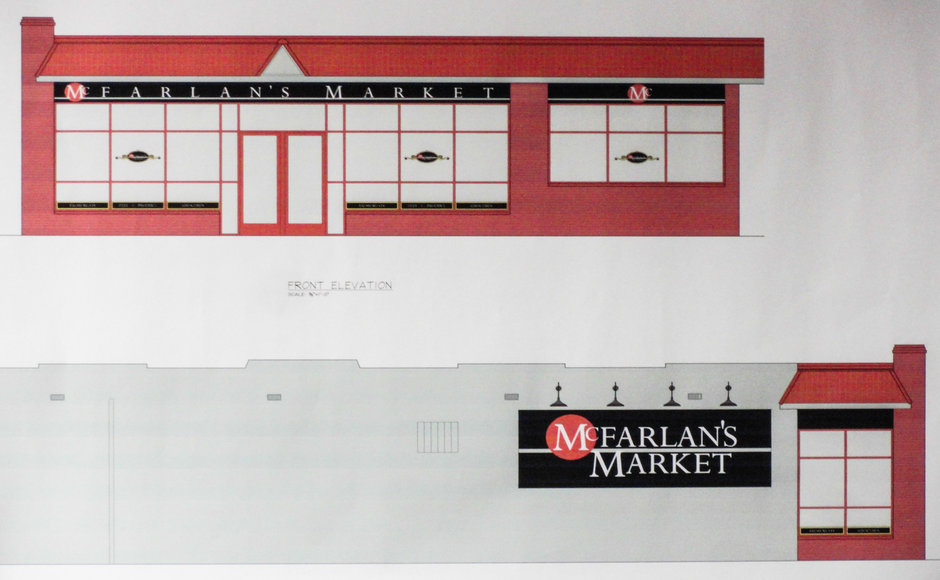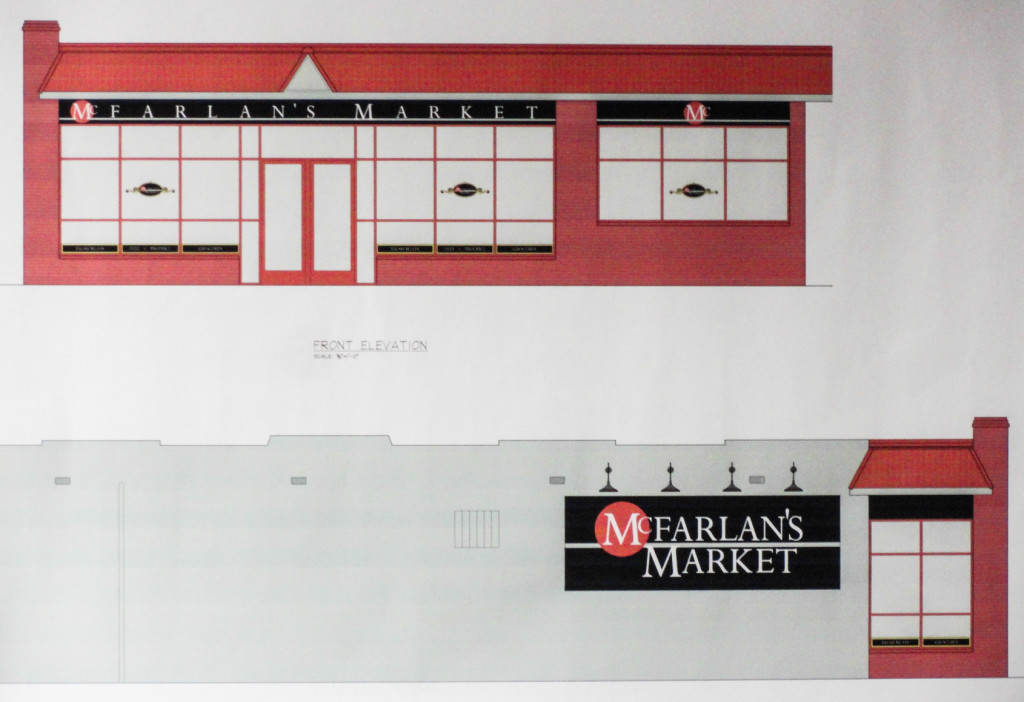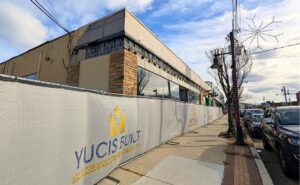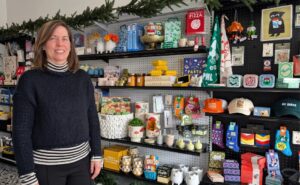The Merchantville grocers presented floor plans for their corner market at the borough meeting.
By Matt Skoufalos
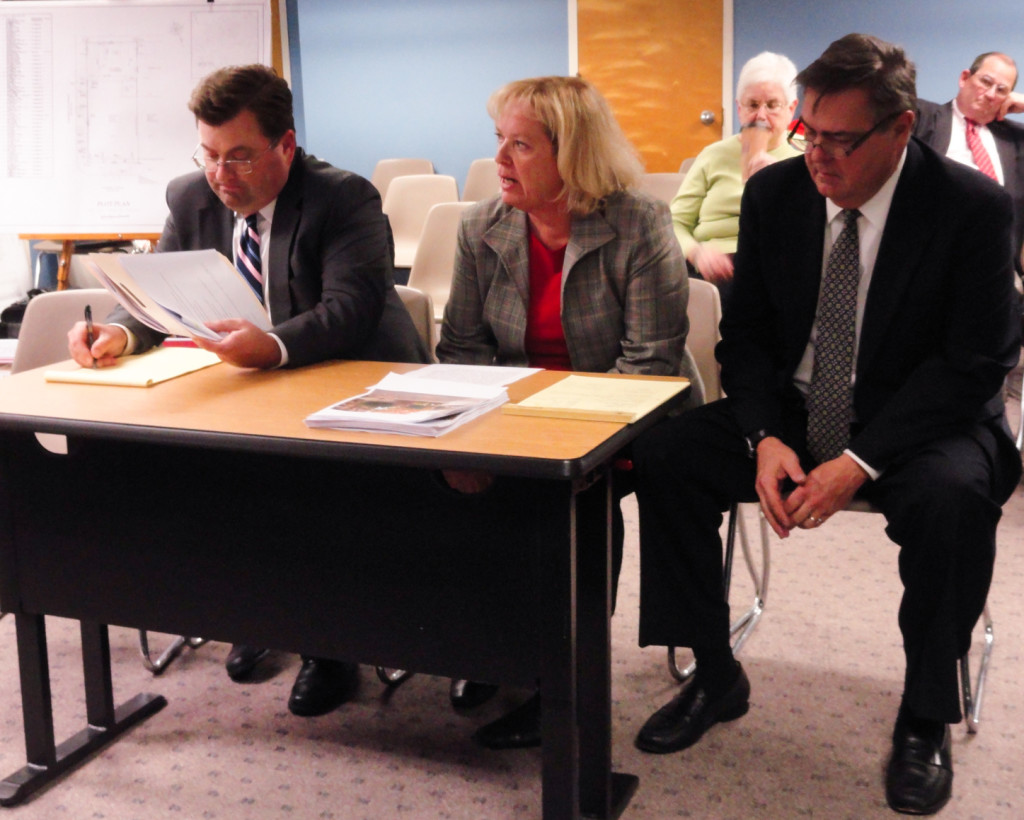
Burgess (right) and Stevens (seated, to his left), present their plans for McFarlan’s Market. Credit: Matt Skoufalos.
It’s been generations since a butcher named McFarlan used to pack the ice chest of his Merchantville grocery store with blocks of frozen water from the Delaware River.
So for the couple opening a second grocery that bears his name, a project that has taken merely years to complete seems quick in comparison.
From the threat of eminent domain to a lengthy small business loan approval process, the process of bringing McFarlan’s Market to a second location at the corner of Haddon and Washington Avenues in Collingswood has been onerous.
But the project took another important step forward Wednesday, as the local zoning board approved site plans for the grocery from husband-and-wife developers Janet Stevens and Peter Burgess.
Burgess, a licensed engineer who also drew up the plans for the renovation, spoke about the “inherent benefit to the community” that adding a market would bring to the Haddon Avenue business district.
“There’s been a market for what we’d historically call a grocery store for decades,” Burgess said. “There’s no lack of opportunity to dine out, but an established grocery store is a missing element in your main street businesses here.”
Steak night on the horizon
With more than 2,000 items in its inventory, McFarlan’s will retail dry goods, produce, specialty items—including those from local bakeries—and a handful of prepared foods.
The shop will also include a coffee station and handicap-accessible eat-in dining for 26. Al fresco tables will add another 10 seats to the sidewalk, conditions permitting.
The plans also include a deli counter and butcher stand serving hoagies and fresh cuts of meat, respectively.
Stevens also proposed an occasional cook-to-order, dine-in steak service, but cautioned, “That’s probably in the future.”
To those expecting the eat-in business to commandeer other restaurant traffic, Burgess made clear that the couple are cultivating walk-up customers and grocery shoppers nearly exclusively.
“Prepared foods is five to 10 percent of sales,” he said. “We prepare entrees based on what hasn’t sold. We might have chicken pot pies. We might have a pre-cooked steak with some roasted vegetables. We do try to have a hot entrée and a soup every day.”
The market will also continue to vend lottery tickets, as the National Market has done. The rear lot of the building, which serves as an easement for other businesses and provides one or two parking spots, will be preserved for those purposes as well.
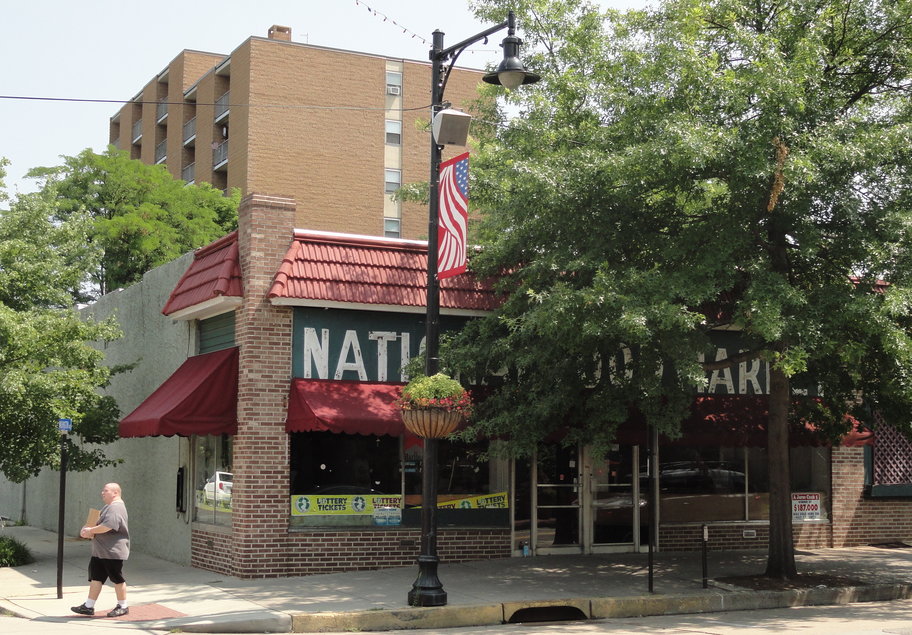
The mostly defunct National Food Market will be converted into a second McFarlan’s Market grocery store. Credit: Matt Skoufalos.
Building for growth
The Collingswood storefront is one-third larger than the couple’s Merchantville location, allowing for expanded inventory, Burgess said, and the capacity for increased customer numbers.
“In Merchantville, we probably average just under 200 sales a day,” he said. “I’d like to think in Collingswood, we’d likely knock on 300.”
Those extra sales could necessitate hiring a greater workforce, the couple added. Typically, the storefront operates with four to six employees, but “this is going to be a larger operation,” Stevens said.
“We hope that we need 10 people,” she said.
With the approvals secured, the couple will move to complete the sale of the property and obtain permits to begin the demolition “as soon as possible,” Stevens said.
“We’re really going to have to do that before we can finalize some of the plans,” she said. “We don’t know everything that’s there until it starts.”
After the tear-down, Stevens said she expects the shop to be ready to open within six months.
Fans of the iconic, neon National Food Market signage would be interested to know that its new owners intend preserve it, possibly repairing it and moving it inside the building for permanent display.
“I’m not sure if it can be repaired or not,” Stevens said.
If not, she added, “We do have a possible lead into a company that buys that kind of thing and uses it for movie sets.
“We hope it would be recycled somewhere,” she said.


